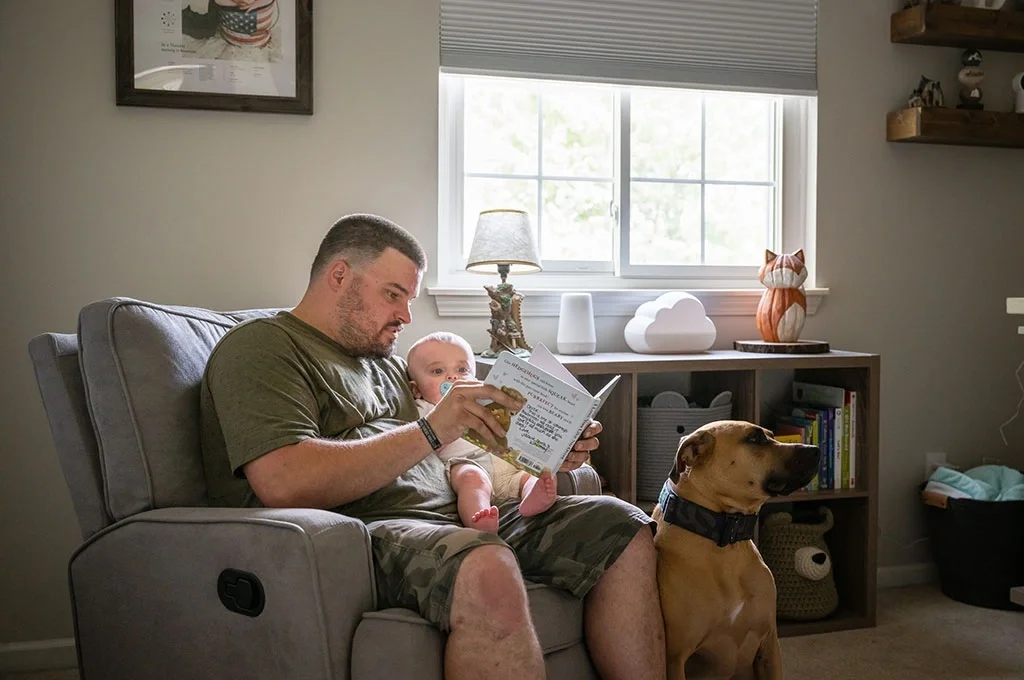
Why Veterans Are Drowning in Debt
Veteran debt is the silent wealth killer many veterans face after leaving the military. Debt can stack up quickly, creating stress in every corner of life and destroying long-term financial stability if left unchecked.
Every year, thousands of veterans transition out of the military and are blindsided by credit cards, personal loans, or confusing financial products. You are not weak if this happened to you. The system is built in ways that make veterans especially vulnerable.
This guide breaks down the veteran debt problem, why it happens, and how to fight back.
How Veteran Debt Becomes a Trap
For many veterans, debt comes from timing, transition, uneven support, and a lack of access to tools, not poor decisions or irresponsibility. Here’s how the debt trap forms:
- Paycheck Shock: Leaving the steady rhythm of military pay and allowances for unpredictable civilian income creates early budget gaps.
- High-Interest Creep: Credit cards and personal loans fill the gaps—but high rates compound fast.
- Benefit Delays: VA disability, education, or housing benefits often take months to process, forcing reliance on short-term credit.
- Aggressive Marketing: Lenders and “credit fix” companies target veterans with offers that sound helpful but pile on fees or extend debt.
- Limited Financial Training: Small mistakes can snowball into lasting debt without structured financial prep during transition.
The result is a cycle where debt, instead of income, drives decision-making. This turns what should be a new beginning into a financial setback.
What Better Veteran Debt Solutions Look Like
When it comes to finances, veterans deserve systems built with the same clarity and fairness they lived by in uniform. Here’s what a better veteran debt solution should look like:
What a Better Veteran Debt Solution Looks Like
|
Principle |
What It Means for Veterans |
Why It Matters |
|---|---|---|
|
Training Like Drills |
Step-by-step financial training delivered during transition, reinforced at 90 days, then again at six months. |
Repetition turns good habits into muscle memory, just like field exercises. |
|
Extending Automatic Protections |
SCRA and MLA protections cover active duty and reserves only, but they should continue automatically after transition. |
Losing these safeguards at separation leaves veterans exposed to predatory lending. Extending them would close that gap and make post-service finances safer. |
|
Guidance, Not Sales Pitches |
A trustworthy service should explain all your options (budgeting help, consolidation, or settlement) without pressuring you to sign up fast. |
Many debt-relief companies make money from your struggle. Clear, unbiased guidance helps you pick what’s best for you, not them. |
|
Honest Language |
If a company won’t explain costs, timelines, or impact on credit, that’s a red flag. |
Honest services tell you exactly what you’ll pay and how long it takes to get results. Anything less could make your debt worse. |
Zero-Based Budgeting: A Proven Strategy for Veterans
Zero-based budgeting is one of the most effective ways to stay out of the debt trap. That’s because you’re assigning a role to every dollar in your paycheck. There’s nothing that can “wander off”.
- Start with your total income for the month.
- Give every dollar a job (bills, food, gas, savings, debt payoff)
- Check in weekly and adjust your sights as needed.
This ensures that there is no wasted cash slipping through the cracks and makes debt payoff a part of the plan rather than an afterthought. Perhaps most importantly, it builds accountability the same way you tracked gear, ammo, or other supplies while in uniform
Why Veteran Debt Hits Harder
Veterans face unique financial transitions in the first six months after leaving the military. While they may be 2–10 times more likely to miss payments than in their last six months of service.
Veteran Debt by the Numbers
|
Debt Issue |
Veterans |
General Population |
|---|---|---|
|
Missed Payments After Separation |
2-10x higher |
Baseline |
|
Share of Bankruptcy Filings |
15% |
6% |
|
Small Business Failure Rate |
Higher |
Lower |
Additionally, as of January 2024, there are ~33,000 homeless veterans on any given night. While that is the lowest number on record, it’s still far too high. Moreover, while veterans only make up ~6% of the US population, they account for a disproportionate amount of the unhoused, with about 20% of homeless men being veterans.
Veteran debt impacts more than money. It also affects health, relationships, housing, and work performance. But by addressing these issues head-on, veterans can improve their health, strengthen relationships, secure stable housing, and unlock new opportunities in their civilian careers.
What Veteran Debt Looks Like in Real Life
There’s a familiar pattern: veterans earn around $60,000 yearly, with about $20,000 in credit card and loan debt. That equals 35 cents owed for every dollar earned. For civilians, the number is usually closer to 25 cents.
At that level, you are constantly forced to choose between fixing the car or paying the credit card, covering a doctor's visit or keeping the lights on.
Debt Load Comparison
|
Group |
Average Income |
Avg. Debt |
Avg. Debt-to-Income Ratio |
|---|---|---|---|
|
Veterans |
$60,000 |
$20,000 |
~35% |
|
Non-Veterans |
$80,000 |
$15,000 |
~25% |
Veteran debt at this level happens when high-interest loans hit at the wrong time during transition.
Why Veterans Face Unique Debt Risks
There are four main reasons veteran debt builds faster than it should:
- Loss of structure. In uniform, pay was steady, and problems were noticed. Out of uniform, you manage everything yourself.
- Targeted credit offers. Expensive loans and cards are marketed heavily to veterans. SCRA and MLA protections help, but only if you know and enforce them.
- Confusing products. Promotional APRs, origination fees, and precomputed interest hide the true cost.
- Stacked life changes. Job shifts, medical bills, childcare, moving, and business ventures often pile up in the same year.
How Veteran Debt Makes Every Other Problem Worse
Money challenges can add up quickly, but understanding how the cycle works is the first step to breaking it:
- Miss a payment → lower credit score
- Lower score → higher insurance and loan costs
- Higher costs → less cash available
- Less cash → more debt
High-interest loans and tricky balance transfers only make it worse if you’re not careful. The good news is you can flip this around. With the right knowledge and support, the same cycle works in your favor: on-time payments build credit, stronger credit lowers costs, and more cash in your pocket means less debt weighing you down.
What You Can Do About Veteran Debt Right Now
You do not need to be a financial expert to start fighting back. Here are practical steps to take today:
- Talk openly about money problems with someone you trust.
- If you are separating soon, make “budget and debt planning” part of your transition checklist.
- Already struggling? Ask for a neutral second opinion on your debt situation.
- If you run a Veteran Service Organization, add a six-month debt check-in to your programs.
You are not defined by veteran debt or your credit score. The same discipline that got you through your time in uniform can help you build financial stability out of uniform.
Mission Debrief: Taking Command of Your Veteran Debt
Veteran debt may be a challenge, but it does not have to define your future. With the same persistence and planning you mastered in service, you can take control and build lasting financial strength.
Your playbook:
- Know what you owe.
- Protect your rights under SCRA and MLA.
- Avoid predatory products.
- Build a simple payoff plan.
- Keep repeating the basics until the numbers improve.
You’ve overcome tougher missions than this. Tackling debt head-on doesn’t just restore your finances. It opens the door to freedom, stability, and peace of mind. You already have the discipline and resilience to succeed, and this is one mission you’re fully equipped to win.
Why Veteran Debt Is More Than Just Money
Veteran debt does not just drain your bank account. It drains mental energy, creates stress at home, and isolates people from support. The VA lists financial stress as a suicide risk factor because the connection is real.
If you are in a dark place, call 988, press 1 for the Veterans Crisis Line, or text 838255.








